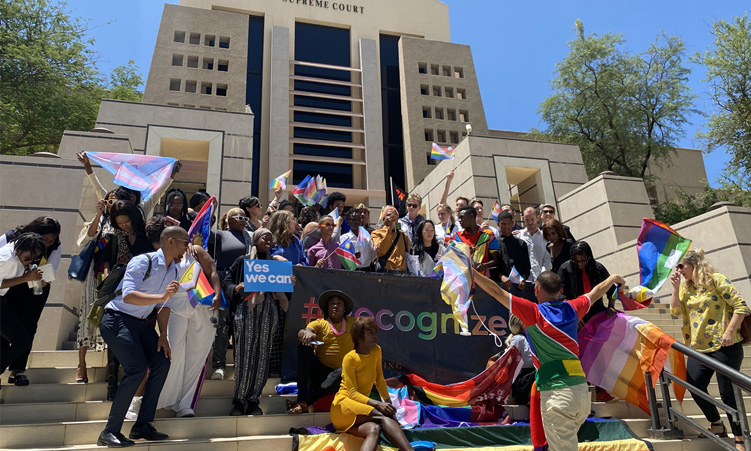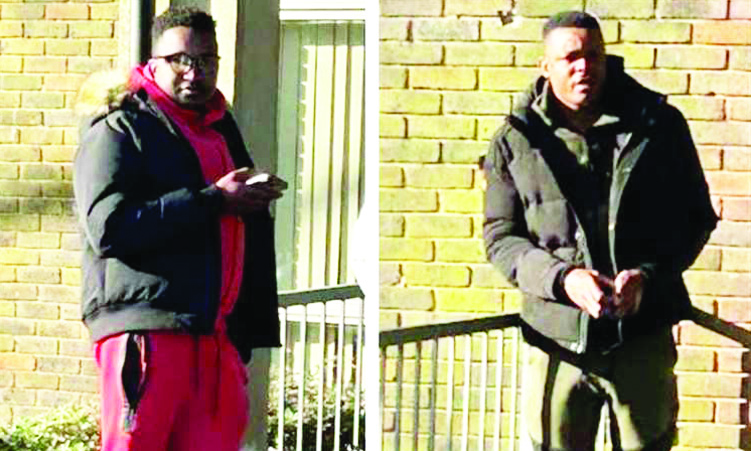WHENEVER I see a bulldozer near a tree, my hackles rise.
So when I saw the photo on the front page of The Namibian of November 25 last year showing the two camel thorn trees destroyed to make way for the northern extension of Robert Mugabe Ave, I immediately compiled an angry letter to the Municipality. Fortunately, before sending off the letter, I phoned my municipal councillor.She explained to me that an environmental impact assessment had in fact been made and the tree had only been sacrificed after due consideration.In the name of the Botanical Society, I wish to applaud the Municipality on their responsible and sensitive treatment of our environment.All over Windhoek along roads, rivers and on open spaces, indigenous trees are left to grow.They are neatly pruned by municipal employees from below to provide shade but no hiding places for persons of bad intent.All these indigenous trees and shrubs need no watering.They provide variety by having many different shapes.They mark the seasons by new leaves, flowers, scents, seeds, and autumn colours.They are home to many birds and insects.Their crowns throw pools of shade to relieve the heat and they give our city a unique note.I wish to draw everybody’s attention to the great value of all established indigenous trees and of camel thorn trees (Acacia erioloba) in particular.Trees in the camel thorn forest to the south east of Rehoboth have been carbon dated: they can grow to be more than 2000 years old! Their rate of growth seems to vary – most sources list them as slow growing which is likely because their wood is particularly hard and durable.According to The Namibian new trees, including camel thorn trees, are to be planted along the extension of Robert Mugabe Ave.However, this promise, while being laudable, will only result in well-developed trees in 50 years or so.Thus, many citizens of today will not live to see them grow into anything like the two trees that were destroyed.Well-established camel thorn trees (and shepherds trees – Boscia albitrunca) are of the most drought resistant trees we have.With water levels in the dams receding and ever tighter water restrictions looming, very soon there may not be enough water to grow new trees.It is therefore imperative that all existing trees be conserved and protected.They have proved that they can grow and develop on the spot where they are growing.Please go out of your way to accommodate and protect them Established trees are a public asset.Nobody should be allowed to remove well-established indigenous trees from streets and side-walks, and even their own premises, without obtaining permission from a committee made up of ecologists, engineers, forestry officials, members of the public and representatives of the municipality.For our own sake, we should maintain a beautiful and healthy environment.Tourism is a growing industry in Namibia which will become ever more important, especially if rainfall continues to deteriorate and agriculture becomes less productive.We need to look after our country and to make it as attractive and as unique as possible for tourists.Maintaining our indigenous vegetation on all levels and everywhere, in particular in the capital of the country that every tourist visits, is a very important step in this direction.- Luise Hoffmann – WindhoekFortunately, before sending off the letter, I phoned my municipal councillor. She explained to me that an environmental impact assessment had in fact been made and the tree had only been sacrificed after due consideration. In the name of the Botanical Society, I wish to applaud the Municipality on their responsible and sensitive treatment of our environment. All over Windhoek along roads, rivers and on open spaces, indigenous trees are left to grow. They are neatly pruned by municipal employees from below to provide shade but no hiding places for persons of bad intent. All these indigenous trees and shrubs need no watering. They provide variety by having many different shapes. They mark the seasons by new leaves, flowers, scents, seeds, and autumn colours. They are home to many birds and insects. Their crowns throw pools of shade to relieve the heat and they give our city a unique note. I wish to draw everybody’s attention to the great value of all established indigenous trees and of camel thorn trees (Acacia erioloba) in particular. Trees in the camel thorn forest to the south east of Rehoboth have been carbon dated: they can grow to be more than 2000 years old! Their rate of growth seems to vary – most sources list them as slow growing which is likely because their wood is particularly hard and durable. According to The Namibian new trees, including camel thorn trees, are to be planted along the extension of Robert Mugabe Ave. However, this promise, while being laudable, will only result in well-developed trees in 50 years or so. Thus, many citizens of today will not live to see them grow into anything like the two trees that were destroyed. Well-established camel thorn trees (and shepherds trees – Boscia albitrunca) are of the most drought resistant trees we have. With water levels in the dams receding and ever tighter water restrictions looming, very soon there may not be enough water to grow new trees. It is therefore imperative that all existing trees be conserved and protected. They have proved that they can grow and develop on the spot where they are growing. Please go out of your way to accommodate and protect them Established trees are a public asset. Nobody should be allowed to remove well-established indigenous trees from streets and side-walks, and even their own premises, without obtaining permission from a committee made up of ecologists, engineers, forestry officials, members of the public and representatives of the municipality. For our own sake, we should maintain a beautiful and healthy environment. Tourism is a growing industry in Namibia which will become ever more important, especially if rainfall continues to deteriorate and agriculture becomes less productive. We need to look after our country and to make it as attractive and as unique as possible for tourists. Maintaining our indigenous vegetation on all levels and everywhere, in particular in the capital of the country that every tourist visits, is a very important step in this direction.- Luise Hoffmann – Windhoek
Stay informed with The Namibian – your source for credible journalism. Get in-depth reporting and opinions for
only N$85 a month. Invest in journalism, invest in democracy –
Subscribe Now!









